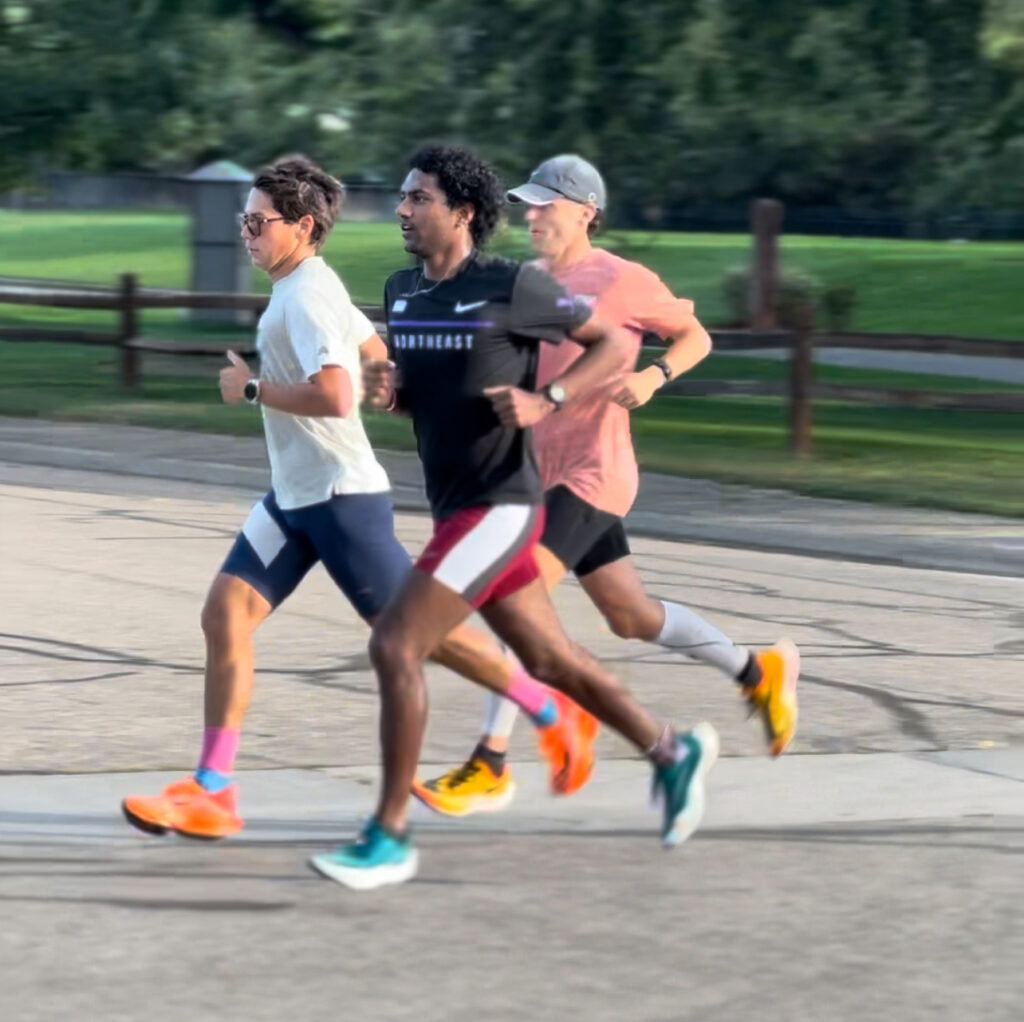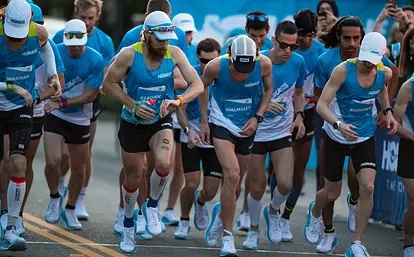Can you be really fast and still run really far? Yeah, probably.
Every now and then, I get a question that seems like it should have a simple answer: “Can I train for a 100-mile race and still get faster at the 5K?” A lot of people assume the answer is no—that ultra training will ruin short-distance speed, or that speedwork won’t translate to endurance. But the reality is, you can do both.
In fact, not only can you train for both, but being in peak 5K shape is actually an incredible place to start from when training for an ultra—and vice versa. The better shape you’re in, the easier it is to shift gears when the time comes.

The mistake most people make is thinking themselves into a specialist box. Runners say, “I’m an ultra guy” or “I’m a 5K runner”—but in reality, being in peak shape for any event is a better jumping-off point than just thinking about your goal from the sidelines. It’s always better to be physically primed for something different than just mentally focused on what’s next.
The Overlap: What Benefits Both?
When training for two seemingly opposite goals, the key is focusing on the common ground. Because the truth is, ultra training and 5K training aren’t as different as they seem.
Here’s what benefits both:
✅ Overall Volume – A strong aerobic base is king. It’s going to help you hold pace over 5K, and it’s obviously crucial for 100 miles. Running more (to a point) makes you better at both.
✅ Basic Speed Development – Strides, short hill sprints, and controlled speedwork keep your legs moving well, even if you’re focusing on endurance. If you ignore speed completely, it’s much harder to get it back later.
✅ Strength & Hills – Strength work makes you more durable, which is key for both long ultras and hammering a short race. Hills do the same while adding some sneaky speedwork.
Incorporating strides once a week is a game changer. Strides keep your neuromuscular system activated, improving turnover, efficiency, and running economy. This not only enhances your ultra-running performance but also ensures you’re primed and ready to shift quickly into a faster training block if needed. Regular strides help you transition into harder, faster speedwork sooner and more safely.
Strength training is another powerful asset that bridges both ends of the running spectrum. It improves durability and resilience, enabling you to handle higher volume and intensity whether you’re prepping for a 5K or gearing up for an ultra.
Instead of seeing 5K training and ultra training as separate worlds, the better approach is to build up the shared elements first, then shift the focus as needed.
How Training Needs to Shift
The real challenge isn’t whether you can train for both—it’s how you transition between phases without losing progress in either.
📆 Ultra Block (Leading into a 100-Miler)
- More volume—big long runs and back-to-back days
- Sustained efforts—think tempos and steady-state runs
- Small doses of speed—so it’s not completely gone when you shift focus

📆 Speed Block (Leading into a 5K Race)
- Volume holds steady or drops slightly
- More focus on VO2 max work—hard intervals, race-specific efforts
- More frequent speed exposure—because those adaptations fade faster than endurance
This is where most runners get it backwards—they try to think their way into fitness rather than just getting out there and training. You don’t have to “mentally prepare” for a 5K or a 100-miler if you’re already fit. Once you’ve built a strong aerobic base, it’s easier to convert endurance into speed than the other way around.
So ultra training won’t kill short-distance speed, but if you completely neglect speed for too long, it’ll take longer to get sharp again. That’s why it’s so much better to stay in great shape for something rather than overthinking what’s next.
Common Concerns (And Why They’re Not Deal-Breakers)
When athletes bring this up, they usually have some very real concerns—things like:
“Won’t all the slow ultra miles make me worse at running fast?”
Not necessarily. If all you did was slow jogging, then yeah, your turnover and economy would take a hit. But that’s not what we’re doing. By keeping strides, hill sprints, and some faster efforts in the mix, we make sure you don’t lose that top-end speed.
“If I run a 100-miler in January, won’t I be too wrecked to train for a fast 5K by summer?”
Not if we do it right. The four to five months between the two is plenty of time to recover and then shift the focus back to speed. Plus, the big aerobic base we build for the 100-miler is only going to help when it’s time to focus on the 5K.
“Should I just pick one goal instead of trying to do both?”
It depends, but most of the time, you don’t have to choose. As long as you’re consistent, both goals can feed into each other. The only time you might need to reconsider is if your short-distance goal is so extreme that ultra training would genuinely interfere (like trying to run a sub-4 mile). But for a 5K? It’s totally doable.
The Bottom Line
Yes, you can run ultras and still be fast. In fact, the best way to get faster is to stay in peak shape year-round, whether that’s for a different distance or a different race.
It’s always better to be physically primed for an event than just mentally locked in on what’s next. Fitness transitions better than mindset.
If you’ve got both on your radar, let’s build the right plan to make sure you don’t have to pick one over the other.



